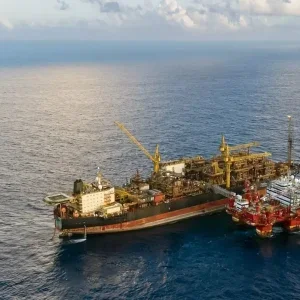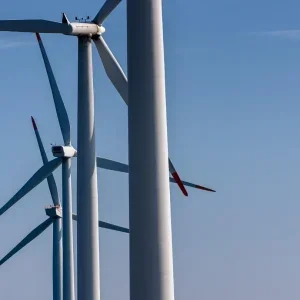
Among the various types of biofuels, biogas is gaining popularity across the world as it can be produced through anaerobic digestion or fermentation of organic wastes along with effluents from industrial as well as municipal wastewater treatment plants in a sealed fermenter.
Owing to several benefits, various types of biogas plants have been developed in different parts of the world. Broadly they can be classified into institutional and commercial, based on the application. A typical biogas plant consists of a digester and gas holder either in a single chamber or separate chambers. The anaerobic digestion process takes place in the digester and the produced biogas will be collected in the gas holder. Biogas primarily comprises methane and carbon dioxide and small amounts of hydrogen-sulphide, moisture and siloxanes. Compared to fossil fuels, biogas burns more cleanly and releases less carbon dioxide per unit of energy.
Biogas generated at these plants is being used to produce electricity and heat. It is also being used to run vehicles and also as a fuel for different industrial applications. Furthermore, residues from the anaerobic digestion process constitute a nutrient-rich digestate, which can be used as an enriched organic manure to supplement the use of chemical fertilizers.
Market research firm Global Data has forecasted moderate growth for the global biogas power market between 2012 and 2025, expecting it to climb from 50,516 GWh to 130,321 GWh at a CAGR of 7.6%.
Some of the largest biogas plants operating in the world are given below
Mexico City waste-to-energy plant
A new biogas plant is coming up on the site of Bordo Poniente, a former Mexico City’s largest landfill site. Mexico’s development banks Bancomext and Nafinsa, and national infrastructure fund Fonadin are backing the project.
Veolia, through its subsidiary Proactiva Medio Ambiente Mexico S.A. de C.V., has won the public call for tenders published by the government of Mexico City. The company signed the contract to design, build, and operate the facility.
The new waste to energy facility, which is expected to cost $1.6bn, will provide an efficient alternative for treating the waste from this city of 10 million people. It will generate 965,000 MWh of electricity per year, which will be used directly by the Mexico City Subway Metro.
Construction work is scheduled to start in 2017 and will last three years. Operations are expected to commence in 2020.
C2e Renewables NC, US
Carbon Cycle Energy (C2e) of Colorado is constructing America’s largest utility-scale biogas plant – C2e Renewables NC – near Warsaw in Duplin County. C2e CEO James Powell said that upon completion in late 2017 the biogas facility will produce enough fuel annually to generate approximately 290 GW hours of electricity. The $100m facility is designed to process more than 750,000 tons of organic waste and power 32,000 homes annually. C2e has agreed to supply the plant’s total output of bio-methane to Duke Energy and to an undisclosed ‘Fortune 500 company’.
Nature Energy Korskro biogas plant in Denmark
Denmark-based Nature Energy is constructing one of the largest biogas plants in the world.
The biogas plant, which is anticipated to start operations by early 2018, is being built near Korskro, Denmark, in an area of about 13ha.
Upon completion, the facility will process 1,050,000 tons of agricultural biproducts and organic waste. It is expected to produce 41 million Nm3 of biomethane (equal to 45.4MW) per year to the Danish gas grid.
The biogas plant, which will be based on manure, energy crops and organic by-products, is designed to adapt to the existing elements in the landscape.
Nature Energy is claimed to be the largest producer of biogas in Denmark. The Danish Government signed a green energy agreement in 2012 to facilitate the distribution of upgraded biogas in the gas grid.
Nature Energy has established four large-scale biogas plants and is in the process of constructing an additional three facilities.
In total, the company is planning to build 17 biogas facilities in Denmark.

Image: Nature Energy Korskro biogas plant is anticipated to start operations by early 2018. Photo: courtesy of Nature Energy A/S.
Jordberga Biogas plant in Sweden
Swedish Biogas International has established Sweden’s largest anaerobic digestion plant in Jordberga, northeast of Trelleborg, for the production of biogas. Other partners in the project are E.ON, Skånska Biobränslebolaget and Nordic Sugar. The partners have invested $23m on the plant, which will process 110,000 tons of green waste to produce 110 GWh of biogas. Jordberga facility has become fully operational in April 2015. It reduces carbon dioxide emissions by 30,000 tons per year.
Diageo’s on-site biogas plant in Speyside
British on-site anaerobic digestion solutions provider Clearfleau has commissioned an on-site bio-energy plant at Diageo’s Glendullan distillery at Dufftown, Speyside in August 2015. Glendullan biogas facility processes approximately 1,000 m3 of malt whisky distillery co-products per day to produce 6 GW hours of thermal energy for the distillery. The plant reduces fossil fuel energy demand at the distillery by 25%, reducing its carbon footprint by 1,000 tons of CO2 per year.

Image: Clearfleau completes commissioning of new AD plant for Diageo. Photo: courtesy of Clearfleau Limited.
DONG Energy’s biogas plant in Manchester
EnviTec Biogas UK, a subsidiary of Germany’s EnviTec Biogas, has broken ground in April 2016 on a 6MW biogas plant for REnescience Northwich, a subsidiary of Danish utility Dong Energy, in Northwich near Manchester, UK.
The plant, which will use DONG Energy’s patented REnescience technology, will process up to 120,000 tons of waste per year from around 110,000 UK homes. REnescience uses enzymes, mechanical sorting and anaerobic digestion to produce biogas. The facility was expected to be fully operational by early 2017.
Nijhuis Industries biogas plant in Ukraine
The Netherlands-based Nijhuis Industries won a contract in 2012 to deliver a full-scale biogas plant to PJSC Oril-Leader Poultry Farm in Yelyzavetivka, Ukraine. The biogas plant digests chicken manure and creates heat/cooling and energy. It started operating at full capacity in 2013, producing a total of 5 MW hours of power enough to provide electricity to 15,000 apartments and heat to 1,500 apartments. It is one of the largest biogas plants to process chicken manure and slaughterhouse waste in Europe.
Israeli biogas project
Clean energy company Bluesphere has signed a MoU with Israeli State-owned Environmental Services Co (ESC) in September 2014 to develop a 5 MW biogas project in Israel. As part of the agreement, Bluesphere will develop the project, taking care of the permissions, project finance and operations for the plant’s 20-year life. ESC, on its part, will lease a suitable site and supply food waste as feedstock for the biogas plant, besides providing maintenance services.
Agro-industrial biogas plant in Spain
In February 2016, Spanish engineering firm Ahidra, Water and Energy and the Netherlands-based Coltrade have signed an engineering procurement and construction contract to construct one of the largest agro-industrial biogas plants in the world within the dairy industry in northern Spain (Asturias). Developed by Biogasur Generación, the facility is designed to process 400,000 tons of manure annually in Central Lechera Asturiana to produce biogas, solid and liquid fertilizers. The 4.5 MW facility is slated to commence operations in the spring of 2017.






